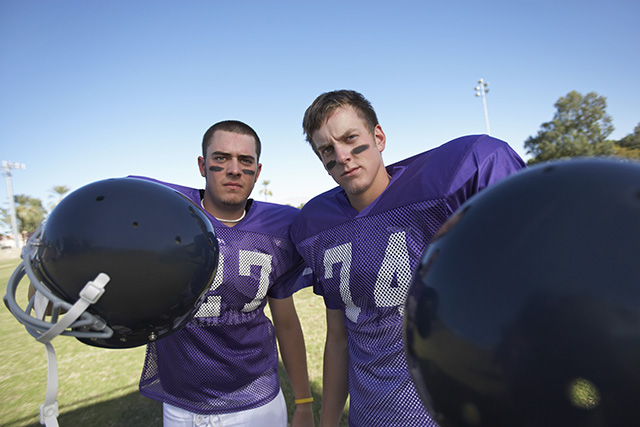Concussions often occur in athletes, but experts still know little about this sports injury. That’s because of the brain’s complexity, and because of the lack of research into concussions.
Concussions are often hard to recognize. A forceful hit to the head or any part of the body that cause a rapid movement of the head may result in a concussion.
Most concussions do not involve loss of consciousness. You don’t even have to be hit on the head. A blow to the shoulder that violently snaps the head can cause a concussion.
According to the CDC, 65% of sports- and recreation-related concussions seen in the emergency department are in children ages 5 to 18 years. Symptoms may not happen right away, but include impaired thinking, memory problems, and changes in emotions or behavior. Concussions in children younger than 10 years old are even more difficult to diagnose.
Helmets reduce injuries
Head injuries are most common in contact sports, but protective equipment can limit the risk. A helmet reduces the force of contact and slows the impact to the brain.
Unfortunately, helmets can give athletes a false sense of security.
Soccer isn’t risk-free, either. Children should not “head” the ball until they are in their mid-teens, although flying elbows, kicked balls, or collisions may pose bigger threats to unprotected heads.
The CDC recommends that you know your concussion ABCs:
- Assess the situation
- Be alert for signs and symptoms
- Contact a healthcare provider
It’s important to remember that you should not return to sports or recreation activities until you are evaluated by a healthcare provider experienced in treating concussions.
Rest is key for the treatment of a concussion. The brain needs time to repair itself.
Often athletes have no symptoms after a few days. Headaches, nausea, and other problems may return from plunging back into sports too soon, though.
Other rules of treatment:
- Immediately after injury, a doctor, school nurse, coach, or trainer who is experienced in evaluating concussions should check the person’s mental status.
- Remove the person from the activity, especially after loss of consciousness, until a healthcare provider experienced in evaluating concussions gives the person approval to resume sports or recreation activities.
- Initially monitor the person’s level of consciousness very closely for 30 minutes, then monitor his or her state of consciousness closely for the next 24 to 72 hours.
- Restrict activity until the person is cleared by his or her healthcare provider to resume normal activities.
- The person should gradually return to light activity. Contact the person’s healthcare provider if symptoms recur.
Experts agree that more research on concussions is needed. Having had one concussion increases your risk for a second, and may cause slower recovery from the second one if it occurs.
Signs of a concussion
Although symptoms may not occur right away, common signs include:
- Headache
- Dizziness or vertigo
- Lack of awareness
- Nausea and vomiting
- Poor attention and concentration
- Fatigue
- Double or blurred vision
- Irritability and/or bothered by light or noise
- Memory problems
- Sleep disturbances
If you cannot easily wake a person who has a concussion, they need immediate medical attention.

